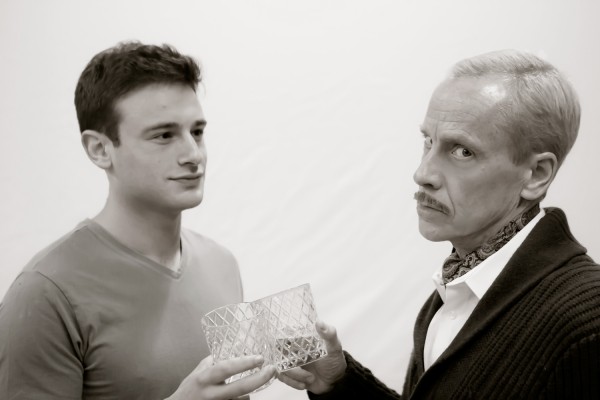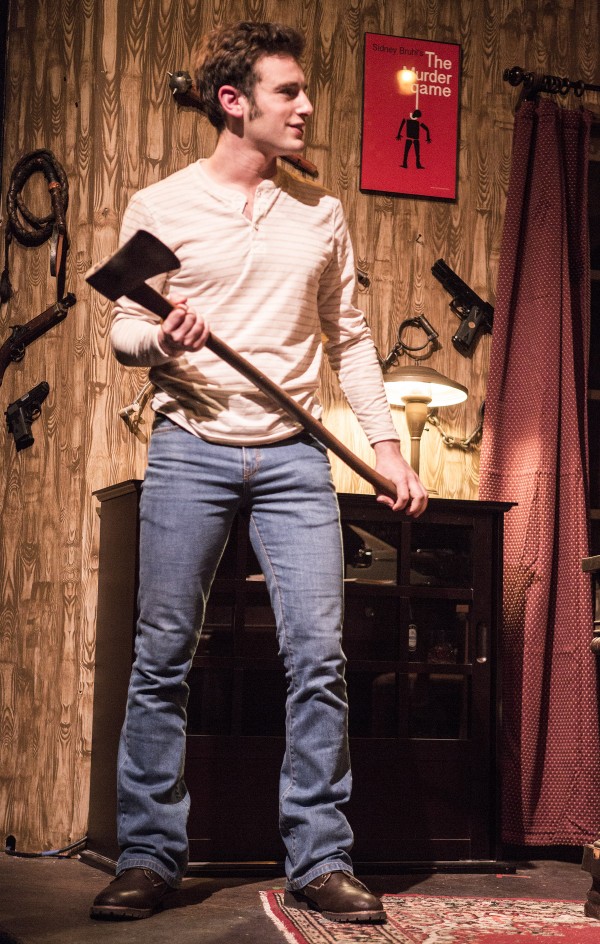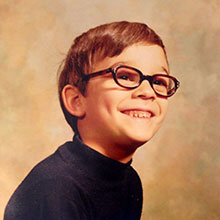
Ira Levin’s twisty self-referential thriller “Deathtrap”—now being staged by Theatre Rhinoceros at the Gateway Theater— is one of the most commercially successful plays of all time. Set in a single room, the meta-mystery follows playwright Sidney Bruhl and his competitive young protegé Clifford Anderson through a series of violent murders—some faked, some real—as they battle over authorship of a show that bears a strong resemblance to the one you’re watching. “Deathtrap” debuted on Broadway in 1978 and was still running when a feature film adaptation opened four years later.
While the movie version was relatively unsuccessful, it forever affected the collective cultural memory of “Deathtrap.” To many viewers at the time, a brief smooch between Sidney (Michael Caine) and Cliff (Christopher Reeve, strapping and shirtless) was the most horrific twist in a thriller full of them.
Reeve later referred to the scene as ‘the ten million dollar kiss,’ suggesting that’s how much potential box office revenue was lost because of it. (There was actually no kiss in Levin‘s script or in the Broadway staging. Ironically, its been added to most theater productions subsequent to the movie.)
Given that Theatre Rhinoceros bills itself as “the longest-running queer theatre in the world” audiences at its new production certainly won’t be scandalized when Sidney (John Fisher) locks lips with Cliff (Jake Soss). What they may be surprised by is just how irrelevant that kiss is in the overall scheme of things.
Based on script alone, “Deathtrap” really doesn’t merit much consideration as queer theater; its an airtight, plot-driven gizmo, a puzzle as much as a play. Its sex appeal is on par with the Sunday crossword. Any character’s gender, sexuality or race could be switched to no significant detriment. In Rhino’s rendition, Sidney’s wife, Myra, is played by Desirée Rogers an African-American actress. While she’d be unlikely to go unremarked upon in the 1970s Connecticut wasp nest where the story takes place, Myra—like every role in “Deathtrap”—hasn’t been written to resonate as an actual human being; she’s just one of the pieces in Levin’s clever game.

While leaving the script to its amusing, automated machinations, Fisher, who also co-directs the show with Jerry Metzker, nonetheless has a fine time embroidering on “Deathtrap”‘s ‘gay play’ reputation. His Sidney is a closeted fussbudget circa ’78. Pulling disdainful faces, adjusting his ascot (!), using homophobic quips as armor and flapping his cardigan-sleeved arms, Fisher evokes John Waters butching it up.
As Cliff, Soss initially struck me as over-emphatically stagy. So I was relieved—not to mention impressed and delighted—to see his style shift after the plot’s first twist revealed that the mediocre performance belonged to the character, not the actor.
Rogers, as Sidney’s wife Myra, and Randy Soloman, as his lawyer, do yeoman’s work in roles that serve primarily as narrative devices. But the third supporting cast member, Anne Hallinan, brings a blithe spirit to Helga Ten Dorp, the psychic next door; her Dutch-accented medium is a dizzy delight, filling the room with infectious comic energy every time she enters.
While Levin’s script is chockful of quaintly dated showbiz references that will sail over many younger viewers’ heads (The Amazing Kreskin, Merv Griffin, “The Magic Show”), the set he describes in his stage directions —which Gilbert Johnson has impressively executed— is one giant, timeless theater joke. Sidney’s wood-paneled drawing room—festooned with an armory’s worth of weapons—is Levin’s knowing wink at Chekhov’s famed playwriting advice: “If in the first act you have hung a pistol on the wall, then in the following one it should be fired. Or it shouldn’t be there in the first place.”
Meeting that standard would make the second half of “Deathtrap” a total bloodbath. But Chekhov’s guidance was offered in regard to the creation of lasting works of dramatic art, not a diverting onstage parlor game like “Deathtrap.” Well aware of his own short shelf-life jokes and fun-but-flimsy gimmickry, the late Levin might be surprised to learn that—despite its long-ago onscreen kiss of death—his comic thriller is still alive and tickling.
